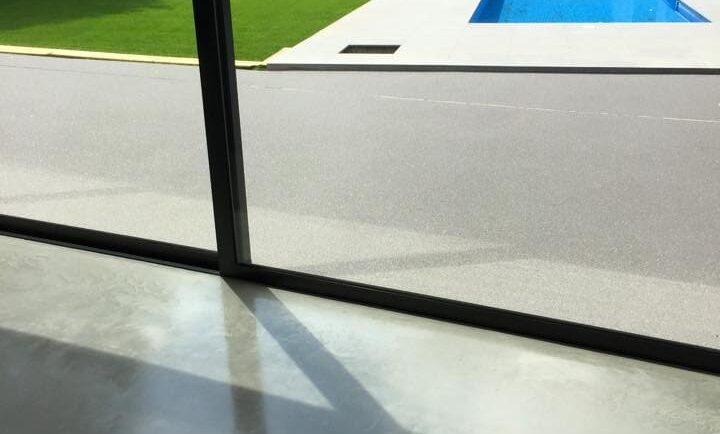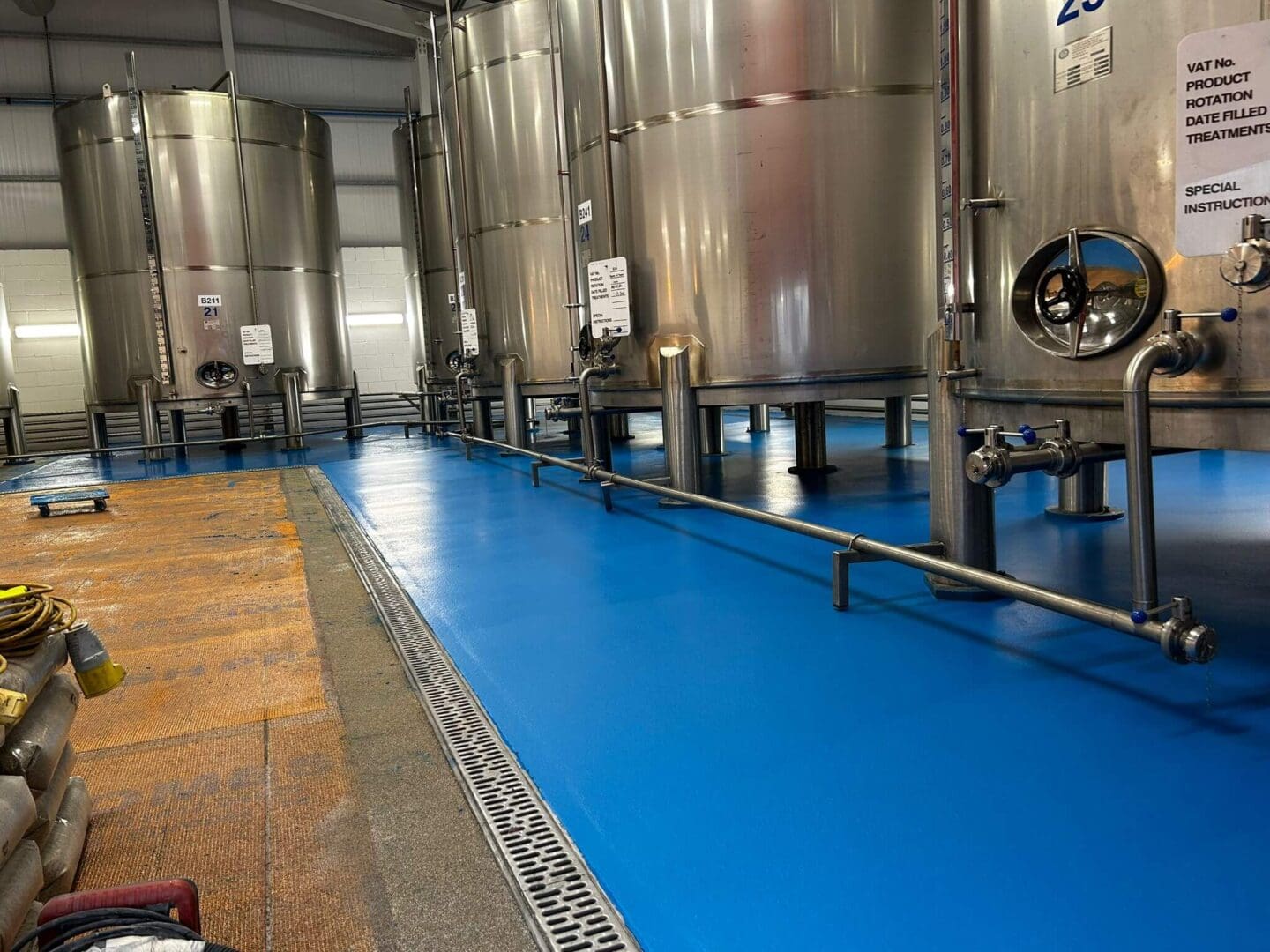
What Are Resin Bound Patios and Why Are Homeowners Choosing Them?
Outdoor living has become part of daily life for many UK homeowners. Patios are now...
Read More
Slips cost time, money, and staff confidence. The fix isn’t a slogan like “anti-slip finish.” It’s a measurable target, tested in real conditions, with a plan to keep performance during service. In the UK, the gold standard is the pendulum test, which reports a Pendulum Test Value (PTV). Here’s how to specify PTV for your kitchen and keep that number once service starts.
In UK commercial kitchens you should specify and accept by pendulum test for commercial kitchen flooring with Slider 96, targeting PTV ≥36 (wet) in final use conditions and verifying results at handover.
If you own H&S, this gives you a defensible standard; if you run ops, it cuts incidents; if you write specs, it’s clear acceptance criteria.
Need certainty now? Book a pendulum slip test and kitchen floor audit. We’ll measure PTV, set texture, and plan a phased install with 24–48 hour return to service.
It means achieving PTV ≥36 (wet) using the pendulum in final use conditions, rather than relying on a lab ramp class.
If you can’t measure it, you can’t hand it over. In UK kitchens, you measure PTV with a pendulum tester on a wet, contaminated surface that reflects day-to-day service. PTV uses clear risk bands:
High 0–24, Moderate 25–35, Low ≥36 (wet).
Two points matter to your specification: test in final use conditions, flour, oil, and water behave differently to clean water and focus on locations that mirror real traffic: cookline, pot-wash, pass, delivery thresholds, and chiller entries.
Write those expectations into your commercial kitchen flooring brief so sign-off at handover is clear.
Testing & acceptance: Use the pendulum with Slider 96 (wet). Take 5 readings per zone, note temperature and direction of travel, photograph each point, and include a marked plan. The average and minimum must meet PTV ≥36 (wet).
Plain English: R‑ratings come from a lab ramp test; kitchens sign off by PTV measured on your installed Commercial Kitchen Flooring.
You’ll see R9–R13 on many datasheets. Treat them as lab ramp references, not acceptance criteria. That’s the DIN 51130 oil‑ramp lab test. It is useful background, but it does not replace an in-situ pendulum test on your kitchen floor. The UK approach is simple: specify and accept by PTV.
With the metric set, decide the targets for each part of the kitchen.
Busy, greasy zones need more bite; quiet routes can use a finer texture if they still hit PTV ≥36 (wet).
Use PTV ≥36 (wet) as the baseline. Push 36–40+ at fry lines and other heavy-grease areas and verify at the agreed locations.
Cookline and fry stations: Aim for PTV 36–40+ wet; use a 0.7–1.2 mm broadcast and re‑test after the topcoat.
Pot-wash and dish areas: Keep PTV ≥36 with a cleanable texture and avoid heavy sealers that flatten micro‑texture.
Pass and service corridors / cold room thresholds: PTV ≥36 with clear demarcation and drainage.
Delivery doors and ramps: PTV ≥36; set falls to drain and a matting policy so water doesn’t track inside.
With targets in place, choose a system that can deliver them on your slab and programme.
Pick a system your team can keep clean; a surface that stays clean keeps its PTV.
PU screed (6–9 mm) and epoxy with a graded broadcast both reach PTV ≥36 (wet) when correctly textured and verified at handover. For front‑of‑house bars and dining, decorative microcement or quartz carpet can work if the final sealed surface achieves PTV ≥36 (wet); for grease‑heavy cooklines, choose PU screed or textured epoxy (see commercial kitchen flooring.)
Built for heat, chemicals, and impact. At 9 mm it tolerates hot wash and steam. Typical prep includes grinding, priming, and a 0.8–1.2 mm broadcast scratch coat. Full broadcast and sealing lock in PTV ≥36 (wet). Plan 24–48 hours to return to service (conditions dependent).
Good fit for: high-volume cooklines, pot-wash bays, food production, and any Commercial Kitchen Flooring exposed to thermal shock or caustic cleaning regimes.
See also: PU Screed product page (polyurethane screed for hot wash kitchens).
Epoxy coatings and self-levellers are thin (<1–4+ mm) and fast to install, but they reflect the slab. Grind and prime and apply a self-leveller where needed. Build grip with a graded broadcast to reach PTV ≥36 (wet) and use 0.4–0.8 mm in pass routes for easier cleaning. Re‑test PTV after any tinted seal.
Good fit for: prep space, pass routes, and ancillary rooms inside the Commercial Kitchen Flooring footprint.
See also: epoxy coatings & self-levellers product page (epoxy with broadcast non-slip finish).
Plain English: Sealers and pore‑fillers can change grip; test again after the final coat.
Choose finer grains for easier cleaning, coarser for heavy contamination, and verify with an in‑situ slip test before handover. Sealing or pore‑filling can reduce micro‑texture, so re‑test PTV after sealing. On decorative systems like microcement, confirm PTV ≥36 (wet) on the final sealed surface and note programmes often run ≥6 days.
Need an area-specific texture specification? Talk to us and we’ll give you free quote.
Even a well-textured floor loses grip once grease films build. Keep PTV where you need it on Commercial Kitchen Flooring with a simple plan:
Use a degreaser that lifts fats and rinses clean. Residues can glaze the surface and drop PTV. Match pads to the texture and use a medium brush or green pad for 0.7–1.2 mm broadcasts, then replace worn pads that push grease. Set daily cleaning for cookline and pot-wash, with weekly deeper cleans. Re-test with a pendulum after installation, after any change in cleaning chemistry, and quarterly in high-risk zones while logging results with photos. Keep PTV readings, locations, dates, and photos together as your record.
Plain English: Write the target, the test, and the proof into the spec so handover is simple.
State PTV ≥36 (wet) with pendulum/Slider 96. Define test locations, set texture by zone, plan phasing and cure windows, and add a cleaning method with a re-test schedule.
Measure: Specify PTV ≥36 (wet) with the pendulum (Slider 96) and agree test locations. Record readings, photos, and a marked plan at handover.
Build: Set texture by zone and detail drains, thresholds, coving, movement joints, and falls to drainage.
Maintain: Issue a cleaning method and schedule with tools, chemistry, frequency, and a re-test date.
Flexflooring will pendulum‑test with Slider 96, set zone‑by‑zone PTV targets for commercial kitchen flooring, and give you a short report with readings, photos, and a marked plan. You’ll also get a cleaning method and schedule and a system recommendation with programme timings (often 24–48 hours return to service, conditions dependent).
Start here: Get a quote & site survey
Experts in epoxy and polyurethane flooring systems

Outdoor living has become part of daily life for many UK homeowners. Patios are now...
Read More